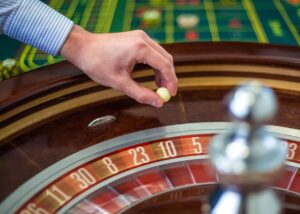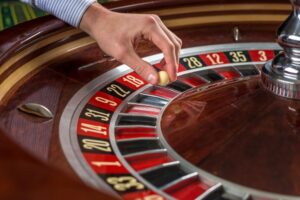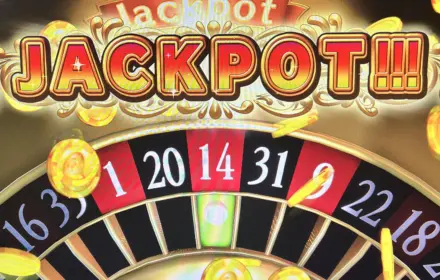Roulette is a gambling classic with no room for chance. It seems that the simple spinning of the wheel and moving the ball is about luck. In fact, there are clear rules and strategies behind these movements. Being able to understand the types of bets and the mechanics of the wheel helps you control the game, rather than just relying on luck. Every spin of the wheel is a new combination of possibilities, where even sectors with zeroes can change the outcome of the entire game.
Learn the rules of roulette if you want to become a true professional.

Roulette wheel and its structure
The roulette wheel is the heart of the game, it is its rotation that determines the fate of the bets. The wheel consists of 37 or 38 sectors, depending on the version of the game, and each of these numbers has its own place on the disc. The rules for each type of roulette are slightly different. In the European variant, the wheel includes 37 cells, where one zero plays an important role. It is the zero that is the only sector that makes the game unique, as all other numbers are divided into red and black sectors. The American version adds a second zero, which increases the casino’s chances of winning.
The distribution of sectors is not random – the numbers are alternated so that it is more difficult for the player to predict the outcome of the next spin. Even and odd, small and large numbers are on the wheel in a certain order, which creates additional elements of tension and unexpected results. It is important to realise that not every spin will be successful, but knowing the order of the numbers helps you choose more profitable betting strategies.
The main types of roulette bets
 Roulette offers a wide range of bets, each of which has its own peculiarities and hides certain risks. The main thing is to understand what you are counting on when choosing one of the options. Some may seem too risky but offer high payouts, while others offer more stability but much lower winnings.
Roulette offers a wide range of bets, each of which has its own peculiarities and hides certain risks. The main thing is to understand what you are counting on when choosing one of the options. Some may seem too risky but offer high payouts, while others offer more stability but much lower winnings.
Straight Bet – risk and reward
A bet on one specific number. The gamble here is pure chance: the odds of success are 1 in 37 (in European roulette). However, if the plan works, the payout is 35 to 1, making this type of bet incredibly attractive to risk-takers. Straight is the highest risk with the highest reward, but it is rare to win in these situations.
Split – bet on two numbers
When choosing a split, the player bets on two neighbouring numbers, which are located next to each other on the playing field. Participants choose two numbers separated by a common border, thereby increasing the chances of winning compared to a straight bet. The payout on a split is 17 to 1. The risks are reduced compared to Straight, but the possible reward is also reduced. This option is often used by players who want to reduce the risks a bit, while maintaining the possibility of a big win.
Street – betting on a row
In Street bet on three numbers lined up in one row on the playing field. The payout on it is 11 to 1. The odds of winning increase because three numbers are bet at once, but the reward is lower compared to Straight or Split. Straight is often chosen by players who want to balance risk and possible winnings.
Kare and its peculiarities
Kare – bet on four neighbouring numbers that form a square on the playing field. It is done simply: the chip is placed in the centre of the intersection of these numbers. The main advantage of a rack is an increased chance of success, as four numbers are covered at once, which means that the probability of winning is higher than for a straight bet. The payout on a rack is 8 to 1, which makes it a balance between risk and possible profit. Experienced players often use the rack to increase their chances of success without taking too much risk, thus keeping the game at a steady pace.
Sixline – betting on two rows
Sixline is a bet on two neighbouring rows of three numbers each, for a total of six numbers. The chip is placed on the intersection of the lines between the rows. The odds of winning at sixline are much higher than at a straight bet, because the player covers six numbers at once. The payout on such a bet is 5 to 1. Sixline is often chosen by those who want to balance risk and reward without resorting to extreme measures. This bet helps to keep the game interesting by maintaining momentum and a sense of control.
Betting on a dozen – a game of large blocks
It covers 12 numbers at once and spreads the risk over a large block. The playing field is divided into three groups of 12 numbers, and the bet is placed on one of these groups. The payout on it is 2 to 1. A dozen allows you to minimise risks, as a significant part of the playing field is covered. It is often used in combination with other bets, which helps to manage your bankroll flexibly. The strategic use of betting on a dozen allows you to stay in the game longer, keeping a steady pace and allowing you to plan your action for the next spins.
Oral bets and their unique features
Oral bets in roulette are an opportunity to control the game beyond the classic selection. They include special combinations of numbers on the wheel, which are chosen not by location on the playing field, but by neighbourhood on the wheel itself. Bets of this kind make the game more dynamic and the process more interesting. Popular variants include Neighbours, Jeux Zeros, Voisin, Thiers and Orpholines. They are especially attractive to experienced players who know the rules of roulette impeccably and strive to use every chance of success.
“Voisin” is a bet on a group of numbers surrounding the zero on both sides, making it one of the most strategic bets. “Thiers” and “Orpholines” cover certain sectors of the wheel, adding an extra element of strategy to the game. In each case, the player chooses a particular set of numbers, relying on probabilities and their feelings.
Bet on “neighbours”
The Neighbours bet includes five numbers: one main number and four numbers that are located next to it on the wheel. It gives the player the opportunity to cover several neighbouring sectors at once, increasing the chances of success. The chip is placed on the main number, and if the ball stops in one of these five sectors, the bet is triggered.
This strategy is popular among players who want to spread the risk and still have a chance to win big. It allows you to maintain a balance between risk and possible profit.
“Je Zero – bet on zeroes and neighbouring sectors
This is a special zeroes and neighbouring numbers bet that covers seven sectors around the zeroes. It is ideal for situations where the roulette wheel is spinning at high speed, and there is a chance that the ball will hit the zero sector or its neighbours. “Jero Zero” offers a higher chance of success compared to classic zero bets, as it captures an entire group of numbers. It is often chosen by those who like to minimise risks without reducing the probability of winning.
Rules of roulette: conclusions
 Gambling is not just about spinning the wheel. The main rule of roulette is to understand the types of bets and strategies to successfully apply them during each gaming session. A competent approach to the issue makes the process not just fun and exciting, but also leads to victory.
Gambling is not just about spinning the wheel. The main rule of roulette is to understand the types of bets and strategies to successfully apply them during each gaming session. A competent approach to the issue makes the process not just fun and exciting, but also leads to victory.

Delve into the rules of the game, choose the type of roulette to your liking, use the right bets to go from beginner to pro.
 en
en  de
de  ar
ar  es
es  nl
nl  hi
hi  fr
fr  it
it  pt
pt  el
el 











